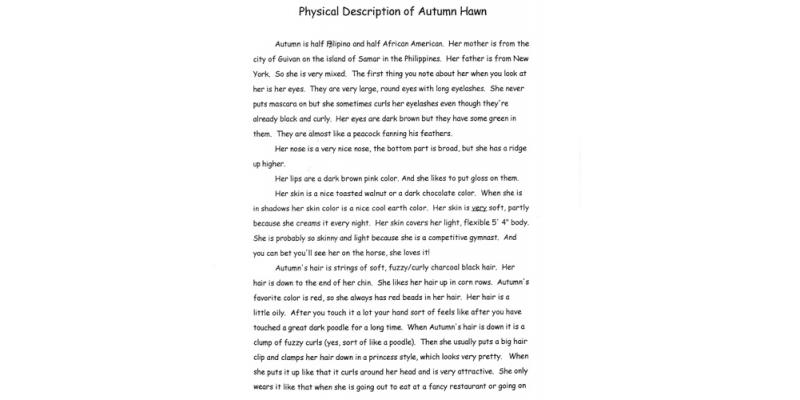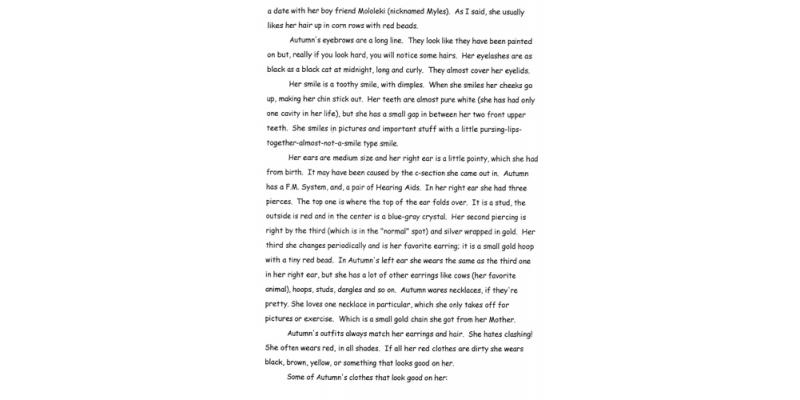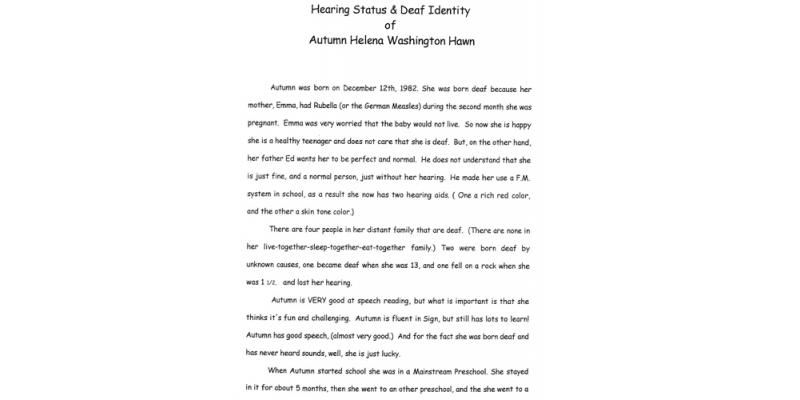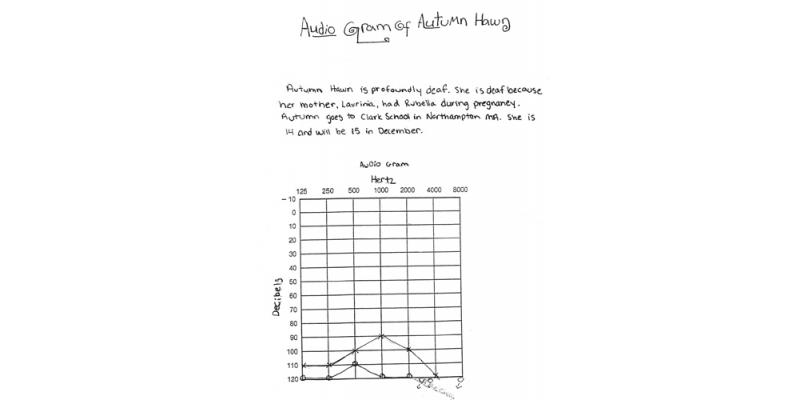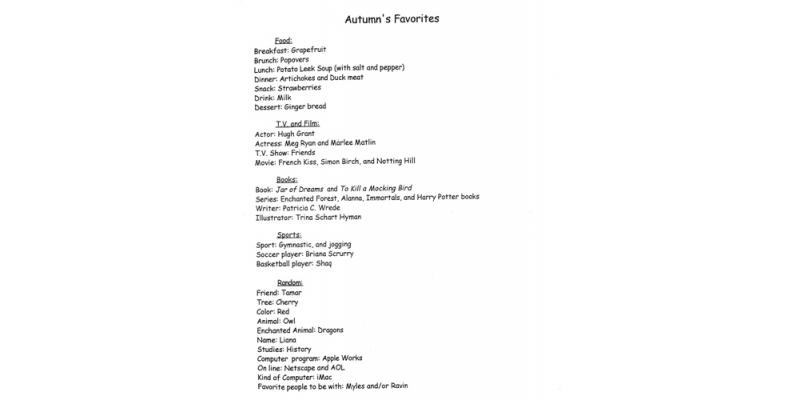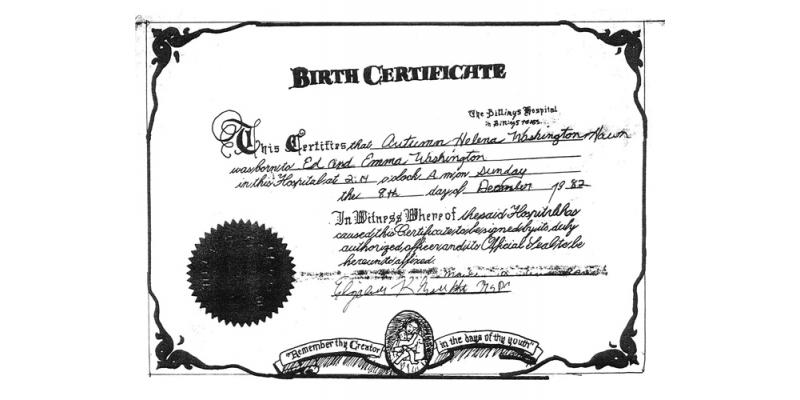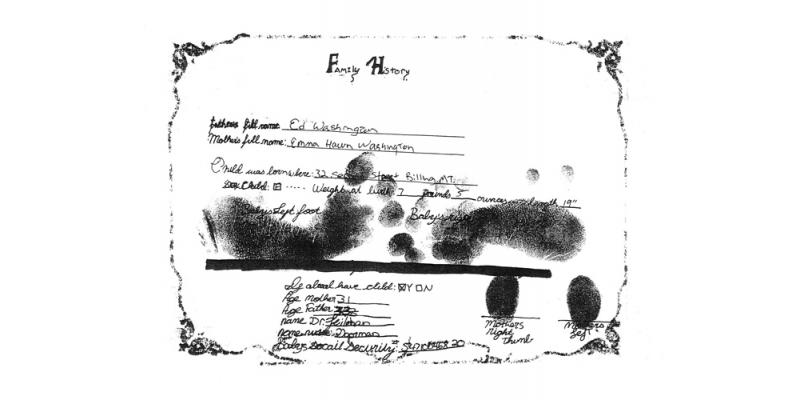Autumn Helena Washington Hawn
School: Shutesbury Elementary School
City/State: Shutesbury, MA
Grade(s): 5, 6
Format(s): Character file
Subject(s): English Language Arts, Social Studies
Project Overview
This Character File (CF) was created by a 5th/6th grade student at the Shutesbury Elementary School, in Shutesbury, Massachusetts, as part of a learning expedition on Deaf Culture.
This character file was created as part of a learning expedition on Deaf Culture and the science of sound. The expedition had many components, including a study of world and U.S. history from the perspective of the Deaf; reading fiction and non-fiction books related to Deaf Culture; and presentations by Deaf people of all ages as cultural experts. Students did fieldwork at four different schools for the Deaf, including overnight exchange visits with students from the New York City School for the Deaf. Through this work, students were exposed to various forms of communication, from oral speech to people who only used American Sign Language (ASL). All students studied ASL with the help of Deaf and hearing instructors and became beginning conversational users of the language.
Students also studied the anatomy and physiology of hearing, and the physics of sound and hearing, working with communication scientists at a local university lab.
The type of CF shown here is a fictional character portrait of a person, with emphasis on realism, accuracy and quality writing. The goal is to create a person whom one would assume to be real. The CF combines mandatory components that all students must include with optional components that allow for student choice based on interest and pace of work. This CF contains the following components: portrait, physical description, hearing status (including an audiogram), personality description, family description, a timeline, a “day in the life”, a list of favorites, and artifacts such as a report card, credit card, and a birth certificate. Additional components not shown in this CF book include a large family tree, scale blueprints for the home of the character (in this case, the blueprints were of the residential dorm at the character’s school), and a finance portfolio for the character that comprises checking and savings accounts; household finances; bills; federal income taxes.
Selected blueprints from Character Files from this classroom are indexed in this project archive as separate products: See project #258 and #259.
Autumn Helena Washington Hawn paints a portrait of a young Deaf woman named Autumn who lives at a residential school for the Deaf. Through the story of Autumn’s life, pieced together through the different aspects this student has chosen to include, the reader gets a glimpse of what it is like to be deaf as well as some of the issues and concerns within the Deaf community. Many of these questions surround different forms of communication and types of schools.
How This Project Can Be Useful
- A project format that combines reading, research, writing, visual arts and (not shown here, but in the finance portfolio and blueprints) math
- A project format with a variety of mandatory and optional components to engage a range of students who have different interests, talents and work at different paces
- A project format with a clear measure of quality for many features: it must be realistic, as judged by experts (e.g. a career description must be accurate; finances must be feasible; blueprints must be well-planned, to scale and to code)
- A unique and engaging way for students to explore a profession, a culture or an historical period and show the depth of their knowledge and understanding
- Strong model of expressive, descriptive writing
- Compelling combination of writing, artwork and the creation of artifacts
- Well-crafted artifacts that come across as quite real
- Demonstrates a format in which individual work can be assessed
Relevant Resources
Common Core State Standards
| Standard | Long Term Learning Target |
|---|---|
| W.5.3 |
|
| L.5.3 |
|

